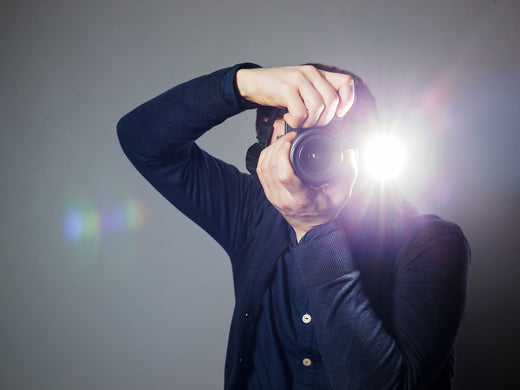
Filming with Leica: Tips for using Leica cameras in video production
Leica traditionally stands for first-class quality in photography. However, the brand's cameras have also found a firm place in the field of video production. Models from the SL and Q series are particularly impressive for moving images. They are equipped with a whole range of professional functions. Below we have compiled the most important information and tips on how to use your Leica ideally for video shooting. We also look at different usage scenarios.
Why Leica for video production?
The most important question is of course: Are Leica cameras really the best solution for you? We think this is the case. Models such as the SL3-S, SL3 and Q3, for example, offer high resolutions up to 8K, support common codecs such as H.265 and ProRes and have customizable color spaces with look-up tables (LUTs). They therefore go well beyond what you need for videos on YouTube or clips for social media, for example.
Open Gate Recording deserves a special mention here. Here, the entire sensor area is used in 3:2 format, allowing more image information to be captured in both height and width. This offers decisive advantages, such as the ability to flexibly crop material for different aspect ratios - be it 16:9 for YouTube or 9:16 for Instagram Stories, for example. This versatility not only saves time in post-production, but also ensures the quality of content across different platforms. You don't have to deal with those annoying black bars.
Some recommended models for video productions
We would like to present some specific models with their advantages that are suitable for video production. However, this list does not claim to be exhaustive. It is always a good idea to compare your requirements with all the Leica devices that fit your budget. Please consider the three models below as inspiration if you are looking. As an example: We have the SL3 in the list. However, this does not mean that the SL2 may not also serve you well.
Leica SL3-S
The SL3-S is ideal for professional videographers who want to benefit from the Open Gate Recording function. With its full-frame sensor and high resolution, it is predestined for demanding projects.
Leica SL3
The SL3 scores points with its impressive 8K resolution and the video codecs that are common in today's world. If you want to shoot promotional videos for companies or your own services, for example, this Leica is a good choice for video production.
Leica Q3
The compact Leica Q3 is designed for videographers looking for a powerful camera in a handy format. Despite its compact format, it produces excellent image quality.
Rely on protection and style in equal measure: Discover the exclusive Half Cases from Oberwerth now and give your Leica the protection it deserves.
Tips for video production with a Leica
1. planning
Before you start shooting, you should have a clear plan for your video. Think about what your goal is, who your audience is (or should be) and what message you want to convey. Also think about the accessories you may need. Microphones and memory cards, for example, are important in this respect. Detailed preparation will help you avoid unnecessary delays.
2. use maximum resolution
For professional projects, it is advisable to always film in the highest available resolution. With the Leica SL3-S you can shoot in 6K (5952 × 3968 pixels) and with the SL3 in 8K (8192 × 4320 pixels). Even if the end product is only played out in HD, you have the freedom to change image sections, simulate camera movements or creatively edit the material in post-production.
3. open gate recording for creative freedom
Use the aforementioned Open Gate Recording function to utilize the entire sensor range of your Leica camera. If you have never used it before, you will quickly realize how much more comfortable shooting becomes with this feature.
4. focus on image composition
When filming with Leica cameras, you should place particular emphasis on image composition. Thanks to the high level of detail and color reproduction of the cameras, you can play creatively with light, shadows and perspectives. Filler motifs - seemingly incidental shots - are also important, as they allow the viewer to come to rest between emotional scenes and round off the narrative.
Or to put it another way: the many possibilities offered by cameras are there to help you take your shots to a new level. You can create image compositions that didn't work before. Especially if you have been shooting with a smartphone up to now.
5. optimize technical settings
Leica cameras offer an intuitive user interface that makes a clear distinction between photo and video functions. For video productions, we recommend switching the camera to manual settings. This gives you full control over exposure, focus and white balance. You should also use external microphones and monitor recorders. This will allow you to further improve the sound and image quality.
6 Post-production
Post-production ("post-processing") is the step to create a finished video from the filmed material. Leica cameras offer decisive advantages here because, as mentioned, they support color spaces with their own LUTs and thus simplify so-called color grading ("color corrections"). The high resolution and the detailed sensor also ensure that the material offers more leeway in post-production.
A few tips for post-production: Even if your final video is intended for social media platforms, you should export in the highest quality to preserve any future potential uses. Post-production is also a learning curve. Don't expect or expect everything to work perfectly on day one. You need to gain experience on how to deal with which type of recording. For example: sound is much easier to handle for indoor recordings in a controlled environment than for outdoor recordings in the city. Take the necessary time to learn how to use the software you use for post-production.
Conclusion: Leica cameras are more than just technology, even for videos
Ideally, Leica cameras should not only be used to shoot videos, but also to tell stories. The synergy of innovative technology and outstanding image quality allows you to create emotional and moving content. With the right settings and functions, you can get the best out of your Leica camera. But always make sure that you really choose the model that best suits your individual requirements. The Q series, for example, is a good choice if you shoot as a hobby but want to meet higher demands. If you work professionally, the SL series is often a suitable solution.
Your Leica camera deserves the best protection: with the customized camera bags and backpacks from Oberwerth, you not only have a functional companion, but also a stylish eye-catcher.

